My family is really susceptible to skin cancer. My father’s had it, my brother’s had it, and I’ve had it – several times. Needless to say, I’m a borderline fanatic when it comes to wearing sunscreen.
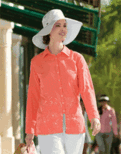
Every year, more than 800,000 Americans are affected by basal cell skin cancer alone. The percentage of women who are younger than 40 when they develop the disease has tripled in the past three decades, says the National Women’s Health Resource Center; the same age group has quadrupled its rate of squamous cell skin cancer. More than 77 percent of cancer-causing exposure occurs after the age of 18. (By the way, tanning beds are no safer than the sun. Using tanning beds before age 35 increases your risk of the even deadlier skin cancer, melanoma.)
The sun’s ultraviolet (UV) rays appear to trigger most lip cancer, too. What’s more, too much sun can prematurely age your face and make you look as pinched as a prune. UV rays even take their toll on eyes, causing cataracts and other ailments.
UVA is the most abundant source of solar radiation; it penetrates beyond the top layer of human skin. UVB is a factor, too. The hours between 10 a.m. and 4 p.m. (9 a.m. – 3 p.m. during standard time) pose the greatest risk, and that’s true whether it is sunny or cloudy
What Can You Do?
• Follow the “shadow rule.” Avoid the sun during the late morning and early afternoon when the sun is strongest – and when your shadow is shorter than you are.
• Use enough sunscreen. Apply one ounce of sunscreen (about the amount that fills your palm or a shot glass) at a time. Larger people will need more. If you’re swimming or sweating a lot, apply sunscreen immediately after drying off. Don’t miss ears, around the eyes, neck (all the way around), hands, feet, toes, and backs of knees.
• Use the right SPF. Different skin types need different SPF (sunburn protection factor) ratings. The American Academy of Dermatology advises choosing a sunscreen with at least SPF 15. If you are fair, burn easily and often suffer bad sunburns, choose higher SPF numbers such as 30 or 45. But don’t stay in the sun longer. An SPF 45 “probably provides 3 to 4 percent more protection than a SPF 15,” says Dr. Susan C. Taylor, MD, a Philadelphia dermatologist and the Founding Director of the Skin of Color Center at St. Luke’s-Roosevelt Hospital in New York. According to Dr. Taylor, even though skin pigment, or melanin, in the “average” African American gives protection equivalent to SPF 13, brown- and black- skinned people should still use sunscreen with at least SPF 15.
• Apply early and often. The American Cancer Society (ACS) recommends applying sunscreen 15 to 20 minutes before going outside to let your skin absorb it, then reapply every two hours. Because no sunscreen is truly “waterproof” or “sweatproof,” reapply after 40 minutes of sweaty activity or swimming.
• Dress for the occasion. Wear protective clothing, such as a wide-brimmed hat, long-sleeved shirt, and long pants. Protect your eyes with wraparound sunglasses that provide 100 percent UV ray protection. Beach umbrellas and other kinds of shade help, but UV rays can still bounce off sand, water, and porch decks. Use sunscreen whenever outside.
What to Buy?
• First, throw away last year’s lotions, as some ingredients lose effectiveness over time.
• Pick the best product. According to Environmental Working Group, 54 percent of sunscreens become unstable when exposed to light and might not offer the advertised protection. The group recommends the “best” sunscreens here.
• Consider self-tanning lotions and sprays. However, you can still burn in the sun, as these only contain an SPF of 4. Use a sunscreen every two hours with an SPF of at least 15.

• Solarweave® is a revolutionary fabric specially manufactured to block more than 97.5% of all UVA and UVB radiation. Available in bathing suit cover-ups, long-sleeve shirts, t-shirts, pants, and hats.
• Coolibar clothing comes packaged with a hang tag that includes an Ultraviolet Protection Factor (or “UPF”) rating. Some clothes claim to block 98% UV. Available in tunics blouses, hoodies, pants, and cover-ups.
Want to learn more? See our Personal Care Page, or visit the National Women’s Health Resource Center .




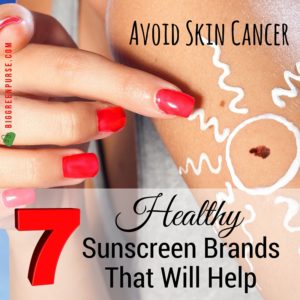
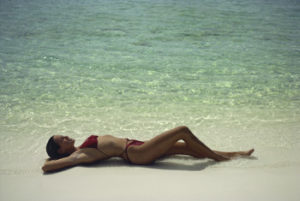
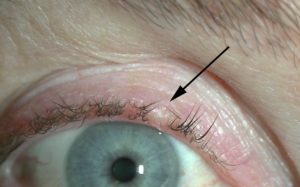
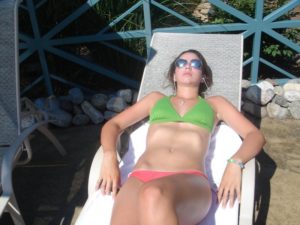








5 thoughts on “Sun-Smart Skin Care”
Very helpful post about sunscreens. I am very fair skinned and I mostly try to keep myself covered up, and stay in the shade as much as I can when I am outside. I don’t like to use sunscreen that much.
When I do use it though I am using Miessence Reflect Outdoor Balm
The product is labeled for SPF 15 but it has actually been tested to SPF 30. It has micronized zinc oxide which acts as a physical barrier. I like the fact that is micronized and not nanoized
and there is no Titanium Dioxide in the product either.
Regards,
Erin
Right about the link between UV rays and Vitamin D, but my understanding is that we don’t need hourse of sun exposure to get the necessary amount of Vit. D in a day. Sun block is necessary to prevent skin cancer. Someone out in the sun all day will surely get enough Vit. D even if they’re still protecting themselves from the sun.
Tanning beds can only be considered an alternative to outdoor sun without the fun. They cannot be considered safe from harmful UV rays. The Indoor Tanning Association is correct that exposure to the sun or UV rays help the body produce vitamin D, but a minimum of 15 minutes of sun exposure is required every day. The risk of melanoma far outweighs the benefit of helping the body produce vitamin D from the sun. You can get vitamin D from a very healthy diet or with supplements. The daily recommended requirement for vitamin D was just increased this June, 2008 from 400mg per day to 1,000mg per day. Forget the tanning beds and take vitamin D supplements.
Zyprexa.
Zyprexa injury attorney cleveland. Utah zyprexa attorneys. Zyprexa. Georgia zyprexa lawyers.
I fry at the drop of a hat. Skin so pale that I’ve been called snow white. When I head outside I always plaster on some 45, minimum. At the beach, I use spf 60. I just have to, otherwise its burn city.
Comments are closed.